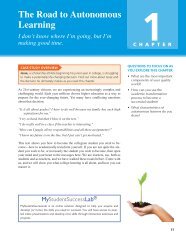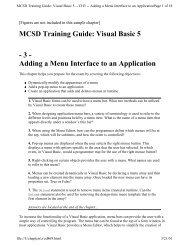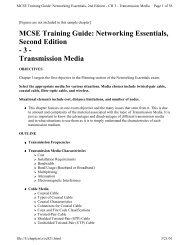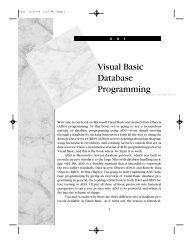SOCIAL PROBLEMS: A Down-to-Earth Approach, 8/e
SOCIAL PROBLEMS: A Down-to-Earth Approach, 8/e
SOCIAL PROBLEMS: A Down-to-Earth Approach, 8/e
You also want an ePaper? Increase the reach of your titles
YUMPU automatically turns print PDFs into web optimized ePapers that Google loves.
With each side of the controversy over abortion firmly committed <strong>to</strong> its cause, deeply entrenched in its views, and strongly convinced of<br />
its morality, this social issue seems <strong>to</strong> be eternally renewed.<br />
policy is followed, but they have no expertise for determining which social policy should be<br />
followed. Social policy is based on values, on the outcomes that people want <strong>to</strong> see. Because<br />
sociology cannot determine that one set of values is superior <strong>to</strong> another, it provides no basis for<br />
making value decisions. In short, from sociology we can estimate likely outcomes of specific<br />
social policies, but we cannot determine which social policy should be chosen. We’ll come<br />
back <strong>to</strong> this in a moment, but first let’s look at how sociologists do their research.<br />
Methods for Studying Social Problems<br />
To investigate social problems, sociologists choose from several methods (ways of doing<br />
research). Which method they choose depends on two things: the questions they want <strong>to</strong><br />
investigate and what is practical. First, they must determine what they want <strong>to</strong> find out<br />
about a social problem, for different goals require different methods. Suppose, for example,<br />
that you want <strong>to</strong> find out how people form their ideas about abortion. This calls for a different<br />
method of research than if you want <strong>to</strong> compare the abortion rates of high-school<br />
dropouts and college-educated women. Second, not everything a researcher would like <strong>to</strong><br />
do is practical. A sociologist might like <strong>to</strong> interview huge numbers of people or <strong>to</strong> conduct<br />
large-scale experiments, but limitations of money and time, or of ethics in the case of<br />
experiments, can make such methods impractical.<br />
Let’s review the methods that sociologists use <strong>to</strong> study social problems. We shall first<br />
distinguish how sociologists design their studies, then describe how they gather their information.<br />
FOUR BASIC RESEARCH DESIGNS. Most studies fall in<strong>to</strong> one of four research designs: case<br />
studies, surveys, experiments, and field studies. Let’s look at each.<br />
Case studies ■ The case study is used <strong>to</strong> gather in-depth information on some specific<br />
situation. As the name implies, the researcher focuses on one case—an individual, an<br />
event, or even an organization such as an abortion clinic or a crisis pregnancy center. Let’s<br />
suppose that you want in-depth information about how women experience abortion. You<br />
might want <strong>to</strong> know what emotions they undergo as they wrestle with the decision <strong>to</strong> give<br />
birth or <strong>to</strong> have an abortion, whom they talk <strong>to</strong> about it, even how they feel during the<br />
abortion and how they adjust afterward. A case study could provide this type of detail.<br />
Surveys ■ As you can see, though, while the case study provides rich detail, it has a<br />
drawback. If you focus on just one woman, how can you know if her experiences are similar<br />
<strong>to</strong> those of other women who have abortions? The survey overcomes this limitation.<br />
In a survey, you focus on a sample of the group you want <strong>to</strong> study. (Sociologists use the<br />
term population <strong>to</strong> refer <strong>to</strong> your target group.) Samples are intended <strong>to</strong> represent the<br />
THE ROLE OF SOCIOLOGY IN <strong>SOCIAL</strong> <strong>PROBLEMS</strong> 17
















